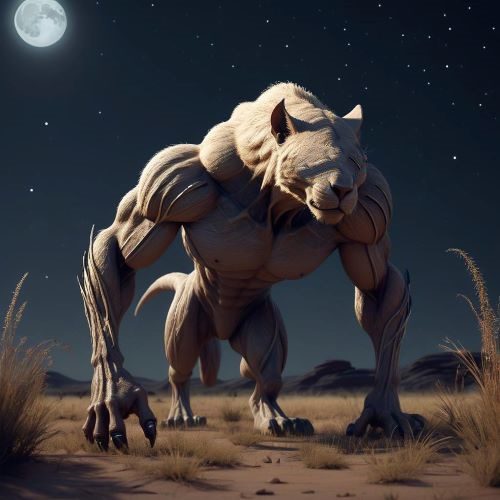Khoikhoi Mythology
Khoikhoi mythology is a rich and complex belief system that originates from the Khoikhoi people of Southern Africa. As one of the region’s earliest pastoralist groups, the Khoikhoi developed a mythology deeply intertwined with nature, the cosmos, and ancestral spirits. Their myths reflect their close relationship with the land, animals, and the forces that shape their environment. Central to Khoikhoi mythology is the belief in a supreme being known as Tsui//Goab, a god associated with creation, rain, and healing. Tsui//Goab is often depicted as a benevolent figure who protects his people, bringing rain to nourish the land and ensuring the well-being of his followers. His counterpart, Gaunab, represents destruction and death, embodying chaos and misfortune. The battle between these two deities is a recurring theme in Khoikhoi mythology, symbolizing the struggle between life and death, good and evil, and order and disorder in the world.
Spirituality among the Khoikhoi is closely linked to their environment. They believe that spirits inhabit natural elements such as rivers, mountains, and the sky, influencing human life. Rituals, prayers, and offerings are made to appease these spirits, ensuring harmony with nature. The moon holds particular significance in Khoikhoi mythology, often associated with renewal, timekeeping, and transformation. Some myths describe the moon as a being that dies and is reborn, reflecting the cyclical nature of existence. Fire is another important element, revered for its warmth and protective qualities, often used in ceremonies to connect with ancestral spirits.
Animal symbolism plays a vital role in Khoikhoi mythology. The eland, a large antelope, is considered sacred and often features in rock art and rituals. It is associated with fertility, strength, and spiritual power, with shamans invoking its essence during trance dances and healing ceremonies. The praying mantis is another significant figure, often seen as a messenger or divine trickster. Some myths suggest that the mantis played a role in creation, shaping the world and guiding humanity. This belief highlights the Khoikhoi’s deep respect for nature and their understanding of the interconnectedness of all living beings.
Storytelling is a fundamental aspect of Khoikhoi mythology, serving as a means of preserving history, teaching morals, and passing down cultural knowledge. Elders share these stories orally, ensuring that younger generations continue to learn about their ancestral heritage. These myths are not just tales of the past but remain relevant, influencing contemporary Khoikhoi identity and spirituality.
Despite centuries of colonial disruption, Khoikhoi mythology has persisted through oral tradition, cultural practices, and artistic expressions. Today, there is renewed interest in reviving and documenting these ancient beliefs, highlighting their significance in understanding Southern Africa’s indigenous heritage. Khoikhoi mythology is more than just a collection of myths; it is a reflection of a people’s worldview, their connection to the land, and their spiritual understanding of existence. It continues to inspire and shape the cultural fabric of communities, reminding the world of the depth and richness of African indigenous traditions.

